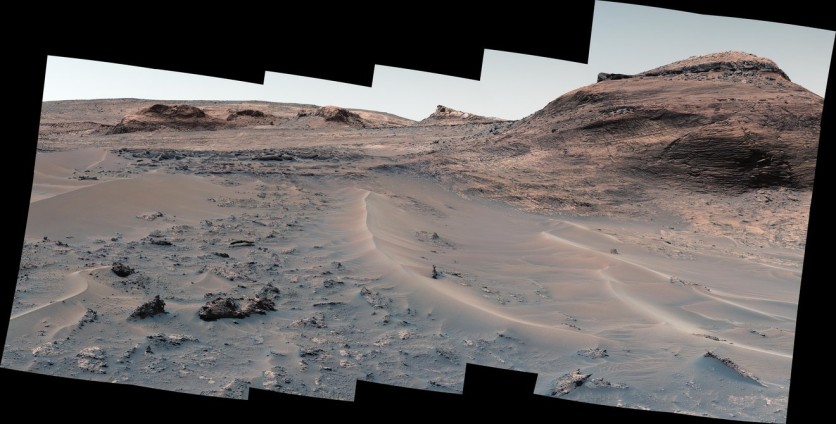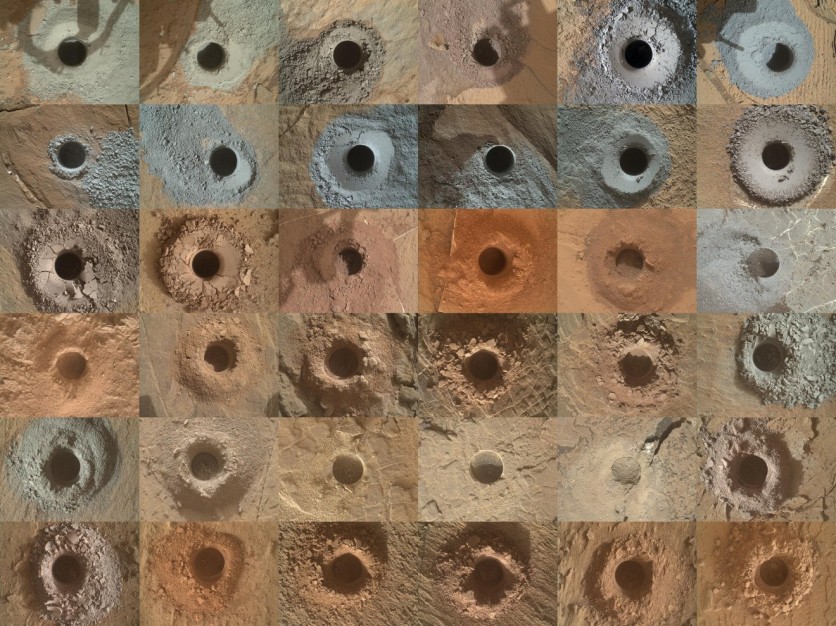A peculiar region thought to have arisen as Mars' climate dried up has been visited by NASA's Curiosity Mars rover.
The Mars rover landed in the "sulfate-bearing unit," a long-sought section of Mount Sharp rich in salty minerals, after traveling through a tiny, sand-lined pass this summer, according to NASA.

Billions of Years Ago
Scientists believe that as streams and ponds dried up over billions of years ago, the minerals were left behind. It is hypothesized that these minerals provide fascinating hints as to how - and why - the environment of the Red Planet went from being more Earth-like to the frozen desert that it is now.
Scientists have been waiting a long time to observe this terrain up close because the minerals were discovered by NASA's Mars Reconnaissance Orbiter years before Curiosity landed in 2012.
The rover quickly found a wide variety of rock types and evidence of previous water, including popcorn-textured nodules and salty minerals like sodium chloride, calcium sulfate, and magnesium sulfate.
They decided to use a rock known as "Canaima" as the 36th drill sample for the project. To crush rock samples for analysis, Curiosity utilizes a percussive, jackhammering, rotary drill at the end of its 7-foot (2-meter) arm.
The team recently came to the conclusion that some harder rocks may require too much hammering to drill due to worn brakes on the arm.
"As we do before every drill, we brushed away the dust and then poked the top surface of Canaima with the drill. The lack of scratch marks or indentations was an indication that it may prove difficult to drill," Curiosity's project manager, Kathya Zamora-Garcia of NASA's Jet Propulsion Laboratory in Southern California, said in a statement.
"We paused to consider whether that posed any risk to our arm. With the new drilling algorithm, created to minimize the use of percussion, we felt comfortable collecting a sample of Canaima. As it turned out, no percussion was needed."

Hazardous Terrain
Curiosity traversed hazardous terrain on its way to the sulfate-rich region, including, this past August, the sand-filled "Paraitepuy Pass," which winds between tall hills. The rover finally arrived at its target after more than a month of safe navigation.
NASA noted that sand can be just as dangerous as jagged rocks and can harm Curiosity's wheels, potentially trapping the rover if the wheels lose grip.
Curiosity had to be carefully orientated in order to point its antennas toward Earth and maintain communication with orbiters passing overhead since the hills blocked its view of the sky.
The team was rewarded for taking such chances with some of the mission's most spectacular vistas, which the rover shot in a panorama on August 14 using its Mast Camera, or Mastcam.
Read also: Garbage on Mars: Over 15,000 Pounds of Human Trash Pile up on the Red Planet, Researcher Says
This article is owned by Tech Times
Written by Joaquin Victor Tacla
ⓒ 2025 TECHTIMES.com All rights reserved. Do not reproduce without permission.




